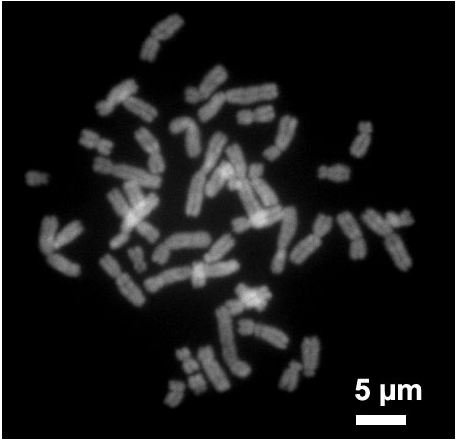Chromosomal Abnormalities: Reciprocal and Robertsonian Translocations
A translocation is a chromosomal abnormality in which material from two nonhomologous chromosomes have been exchanged. Translocations can be balanced, meaning the exchange of material between the two chromosomes is even and there is no extraneous or missing genetic information, or they can be unbalanced, which means the exchange of material is uneven, resulting in missing or extra genes. The two types of translocations include Robertsonian and reciprocal, which is sometimes referred to as non-Robertsonian.
Chromosomal Abnormalities
Reciprocal translocations are the more common types of chromosomal abnormality, occurring in roughly one out of 625 people. Robertsonian translocations occur in roughly one out of 1000 people. Carriers of balanced reciprocal and Robertsonian translocations are typically unaware of their condition, as it is generally harmless. However, their translocations are often discovered if they or their partner experience recurring miscarriages or give birth to a child with genetic abnormalities. The reason for this is because balanced translocation carriers are at greater risk of creating gametes with an unbalanced translocation. If a couple experiences recurring miscarriages, or gives birth to a child with abnormalities, they may be asked to submit a karyotype, a process in which they give a blood sample to a lab, which then analyzes their cells for abnormalities.
Robertsonian translocations were discovered in 1916 by insect geneticist W. R. B. Robertson. Robertsonian translocations differ from reciprocal translocations in that they occur in the five acrocentric chromosomes (e.g., chromosomes in which the short (p) arm is so short, it is very difficult to observe) 13, 14, 15, 21, and 22. Reciprocal translocations typically occur between chromosomes 13 and 14, 13 and 21, and 21 and 22, where the long (q) arms fuse at the centomere and the short arms of each chromosome disappear. While those with balanced Robertsonian translocations have only 45 chromosomes (two have joined together) in each of their cells, as opposed to 46, they are completely normal. Two of the most common forms of unbalanced Robertsonian translocations are trisomy 13, or Patau syndrome, and trisomy 21, commonly known as Down’s syndrome.
Genetic Counseling
Couples and families consisting of translocation carriers are often referred to a genetic counselor. The counselor, who also serves as a patient advocate, will advise the couple or family about their testing options. In the case of a couple desiring a pregnancy, the genetic counselor will evaluate any genetic testing results, explain the possible risks associated with an affected pregnancy, and inform the couple of their options.
